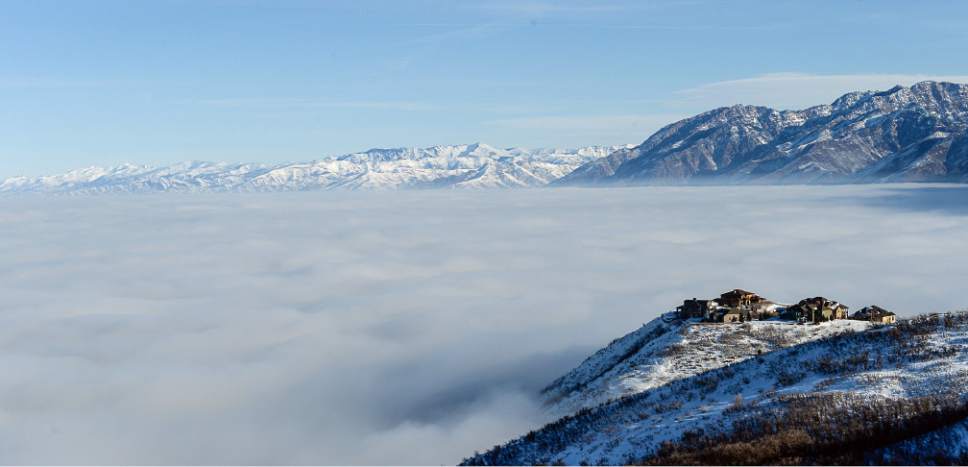This is an archived article that was published on sltrib.com in 2016, and information in the article may be outdated. It is provided only for personal research purposes and may not be reprinted.
Environmental regulators in Utah are hoping for a brighter 2017 after reading the governor's proposed budget.
Gov. Gary Herbert's budget suggests dedicating $1.45 million next year to buy new air quality monitors and upgrade old, increasingly unreliable equipment. The budget also recommends assigning $123,000 for algal bloom response in the wake of this summer's massive toxic algal bloom on Utah Lake.
The Utah Division of Air Quality (DAQ) requested $2.2 million from the Legislature this year, but received $1 million — about half what the division's director, Bryce Bird, said would be necessary to meet the state's air-monitoring needs. With less money than it'd hoped for, the division decided to focus on expanding its monitoring system to growing areas like Cedar City, and make do with old equipment.
About 46 percent of DAQ's existing air monitors had surpassed their expected five-year lifespan, Bird said, which contributed to the increasing frequency of equipment failures. At one point during a significant pollution episode last winter, two monitors — one in Salt Lake City and another in Cache County — failed, sometimes showing the air as virtually pollution-free when levels were actually unhealthy.
If the Legislature — which convenes in January — approves the governor's recommendation, the DAQ could purchase replacement equipment and install a new monitoring station in Iron County, according to Alan Matheson, executive director of the Utah Department of Environmental Quality.
Matheson said he hadn't expected his division to receive any new funds this year — revenue is down and 79 percent of new money is pegged for education.
"In a lean budget year, this is really quite a statement," Bird agreed.
In the Division of Water Quality, the governor's recommendation would fill a hole where no funds previously existed, according to division director Walt Baker.
Baker said the division had to pull $95,000 from other projects to address Utah Lake's algal bloom, which spread into Salt Lake and Davis counties.
"We had to dig deep for those out-of-pocket costs we didn't budget for," he said, which diverted attention from other monitoring projects and delayed scientific studies.
Baker said the $123,000 would be used to hire temporary staff and interns to conduct field work and collect samples during future blooms, and to buy equipment to allow the state to analyze some of those samples itself.
This summer, the division had to send its samples to backlogged out-of-state labs. Irrigation systems in Salt Lake County were shut down for weeks while water managers waited to hear whether the water was safe to use.
The closures lasted so long that state officials considered declaring an emergency in order to make funds available to compensate farmers for lost crops.
"We just don't have the luxury of waiting 15 days or so to get lab analysis back," Baker said. "This will help us speed up and be more responsive to the public."
Baker said analyzing samples in-house would also save money in the long run.
The funds are, however, subject to legislative approval.
"If this does not get funded," Baker said, "we'll be in a pickle."
Twitter: @EmaPen



